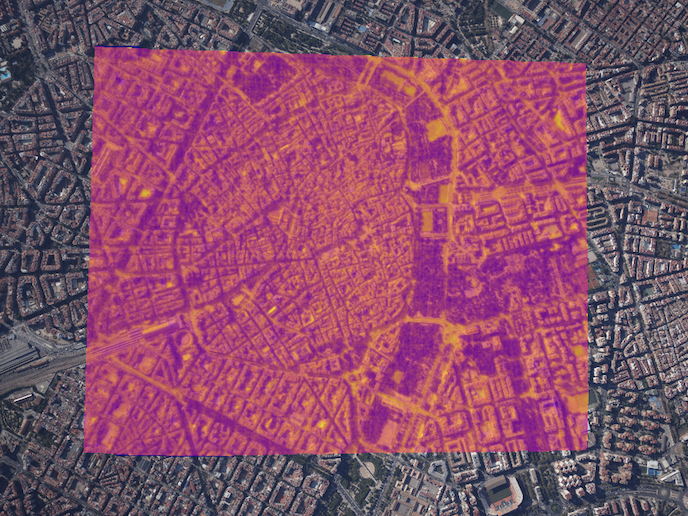New tools to deal with extreme heat in urban hotspots
Record-breaking temperatures are becoming ever more frequent and intense. Over 1.7 billion people around the world are at risk, says the European Commission’s Joint Research Centre (JRC). They add that around half of the world’s cities have faced increased heat exposure over the last four decades. This has an impact on public health, labour productivity and infrastructure. A paper in ‘The Lancet’ published by the EARLY-ADAPT project maintains that over 4 % of summer mortality in European cities is attributable to urban heat islands (UHIs). These are caused when urban developments change the thermal and radiative properties of natural landscapes. This can result in a variety of negative impacts such as increased heat and accumulation of pollutants. “The CityCLIM project brought together diverse data sources to develop services, and support mitigation and adaptation strategies to tackle the impact of UHIs, and other climate change-related hazards,” says Stephan Holsten, CityCLIM project coordinator and head of the Earth Observation Missions and Applications department at OHB System, Germany. To do so, the project established pilot studies in Karlsruhe, Luxembourg, Thessaloniki and Valencia. Resulting services were developed directly according to the needs of the cities concerned, solving existing shortcomings and supporting the practical application of solutions developed within the project.
Developing a clear picture of the impact of UHIs in pilot cities
The project used data from in situ sensor stations located in and around the cities, which measured temperature, precipitation and humidity and pollution indicators. Professional stations were complemented by data from citizen scientist weather stations, such as mobile sensors on bikes, and other local data collection sources. This was combined with a 100-metre resolution operational urban weather model which provided weather forecasts for the cities. Furthermore, Earth Observation data, measuring surface temperatures from a satellite, was used. This was complemented by the identification of surface materials, and optical data showing the current vegetation greenness. “We analysed the incoming information and developed services which are available on a cloud-based, city climate platform. It is scalable and structured in such a way that it can be extended for applications other than urban heat,” explains Holsten.
Empowering residents and planners to tackle the impact of UHIs
The team produced several outcomes, including the Heat Island Identification Service for residents. This applies an improved, urban weather model and predicts the occurrence of extreme temperatures across the city area. This means that vulnerable citizens can avoid places that are due to be very hot, or prepare to take steps to mitigate the impact. For city planners, the team created various tools including the Heat Island Simulation and Mitigation Service which allows users to modify the urban structure, such as by paving a green space, for example. The service then shows the resulting impact on urban heat levels. “This tool was developed specifically to support city administrations to find the best options for urban heat mitigation and adaptation,” adds Holsten. When asked of which project outcome he is most proud, Holsten says the diversity of the developed services: “CityCLIM succeeded in bringing together diverse data sources to offer city climate services and tools to support cities to cope with heat. The solutions are closely aligned with the needs of stakeholders, are scalable and can be transferred to other cities.”
Keywords
CityCLIM, urban heat islands, cities, climate change, extreme heat, city planners, residents



